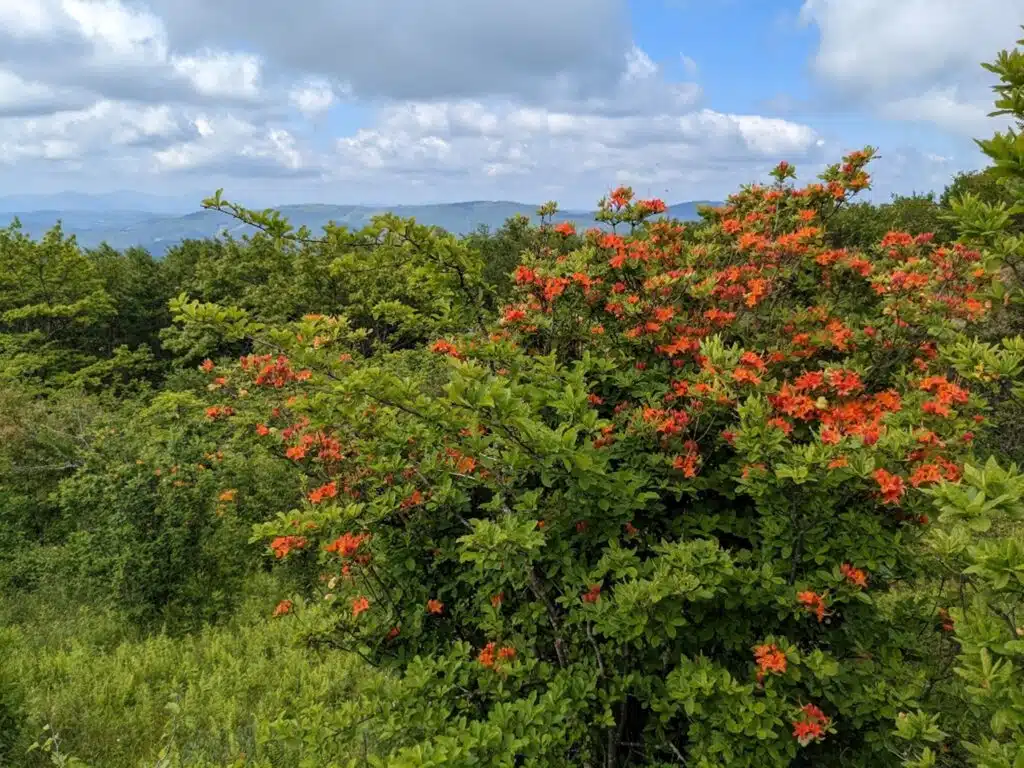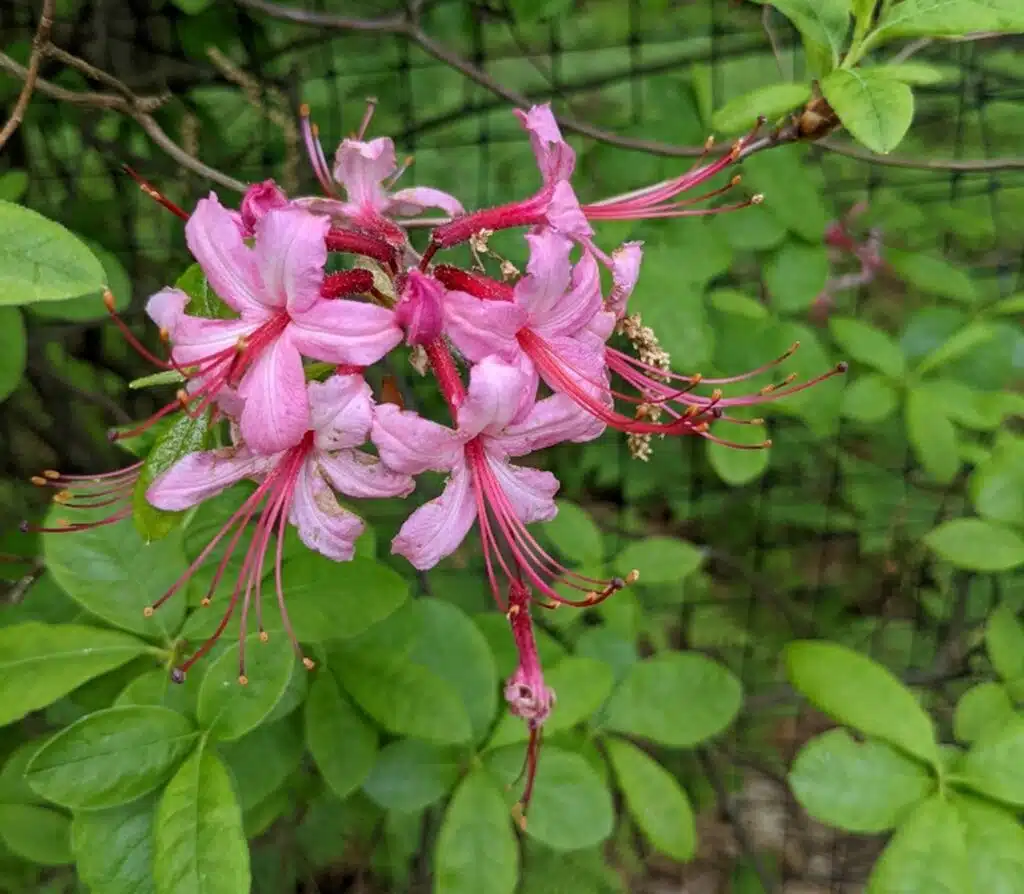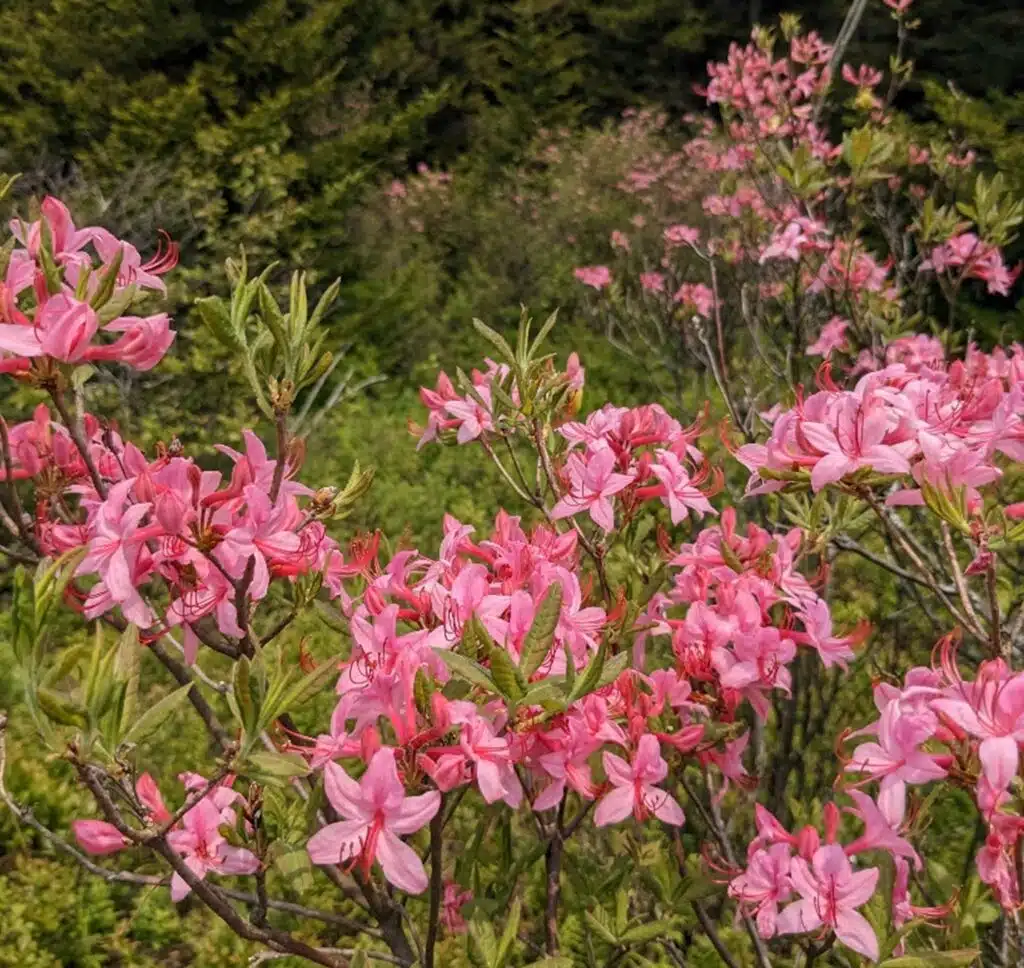
I love native plants, especially the prairie plants of my home state, Iowa. So when I first moved out to Ohio, I knew I’d be learning the new names and faces of the region’s more easternly plant species. What I didn’t realize was that a whole new genus was waiting for me, and that’s the genus Rhododendron.
Iowa is one of the few states in the U.S. where Rhododendron species don’t grow, so learning about this new group of plants was a fascinating and challenging endeavor. As weeks working at HF&G’s Leach Research Station flew by, I found a new vocabulary slipping off my tongue, and a new interest in Ohio’s five native Rhododendron species. So let’s dive together into who these species are and why today most are living in a zone of fragile existence.
Rhododendrons or Azaleas?
While all azaleas are rhododendrons, not all rhododendrons are azaleas. Native azaleas exist as a subgenus (Pentanthera) within the genus Rhododendron, which means all five of Ohio’s native rhododendrons are indeed azaleas. They’re also all deciduous, which means they drop their leaves in the fall.

Our first native species is Rhododendron calendulaceum, the flame azalea. While it only grows in southern Ohio, seeing it is worth a trip. Its brilliant colors of gold, orange, and red are said to make the Appalachians appear as though they’re on fire during blooming season. The species can be identified from other red and yellow azaleas by the prominent yellow to orange blotch on the upper petals. It’s endangered in Ohio due to overshading from dense forests and picking for ornamental uses. If you find it in the wild, leave it there!

Rhododendron groenlandicum, bog Labrador tea, is next. As its common name suggests, the leaves of this species are used in tea by local Indigenous peoples, and it thrives in bogs, wet marshes, and moist forests. It’s also suspected that due to heavy loss of such environments in Ohio that R. groenlandicum has been extirpated (that is, locally extinct) from the state. It has heavy trusses of white flowers and provides food and shelter for the insects and animals that call bogs home.
Next is Rhododendron maximum, the great laurel rhododendron. Bedecked in flowers of white to pink, it has the largest leaves of all the Ohio native rhododendrons. It’s abundant in the Great Smokey Mountains National Park and often used for ornamental purposes. Unfortunately, habitat destruction is the main threat to this species’ survival in the wild. Both R. maximum and R. calendulaceum are progenitors of today’s most well-known ornamental azalea hybrids.

Now we come to our last two species, which are currently the subject of ongoing taxonomical debate. Is one a subspecies of the other? Are they both the same species? It’s currently unclear how distinct Rhododendron periclymenoides (say that three times fast), the pinxterbloom azalea, and Rhododendron prinophyllum, the roseshell azalea, are.

Some differing characteristics are that the pinxterbloom can vary in flower color between white to pink to deep rose, while the rosebay is more uniformly pink and has a cinnamon-clovelike fragrance. One of the best ways to tell them apart is that roseshell has gland-tipped hairs on its fruits, while pinxterbloom does not. To complicate matters, in Ohio, these species can grow in the same areas, where they can hybridize and become nearly impossible to tell apart.

Ohio’s Native Azaleas
Through conservation practices, our team at the David G. Leach Research Station is working to keep our native azaleas stable and thriving in the wild and in our public gardens. While our native species account for only a fraction of the Rhododendron genus, they are an irreplaceable part of the land, now and into the future.
Has this article inspired you to go see some native rhododendrons? Our team recommends Rhododendron Cove State Nature Preserve in Lancaster, OH, where you can see stunning views of Flame Azalea and Great Laurel through mid-summer.
Our Rhododendron and Azalea Collections
At the Holden Arboretum, the Eliot and Linda Paine Rhododendron Discovery Garden and the Helen S. Layer Rhododendron Garden are filled with stunning collections, both native and non-native.
Additionally, in the spring of 2024 we will be allowing visitors to our David G. Leach Research Station in Madison, OH. This hidden gem is 30 acres of rhododendrons, azaleas, and other flowering plants. You won’t want to miss this exclusive opportunity.
Spring Fridays Self-Guided Tours
Kara Grady
Conservation Horticulture Assistant, NOWCorps













